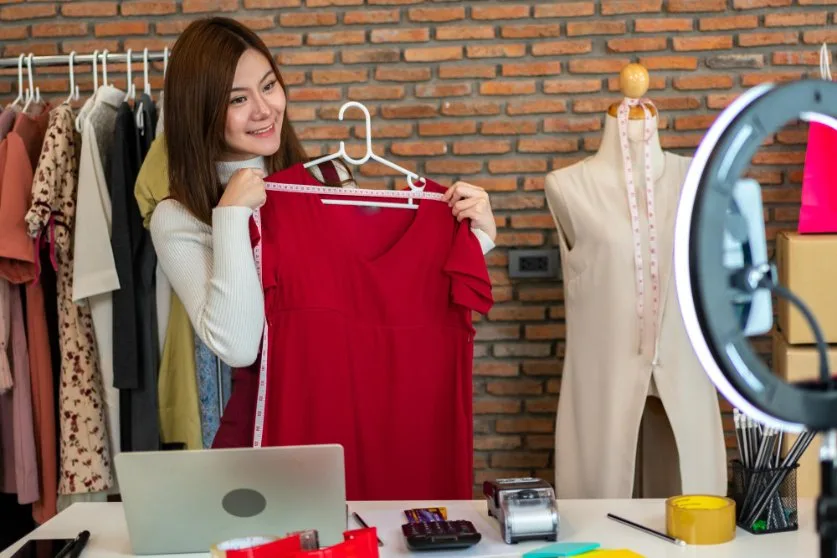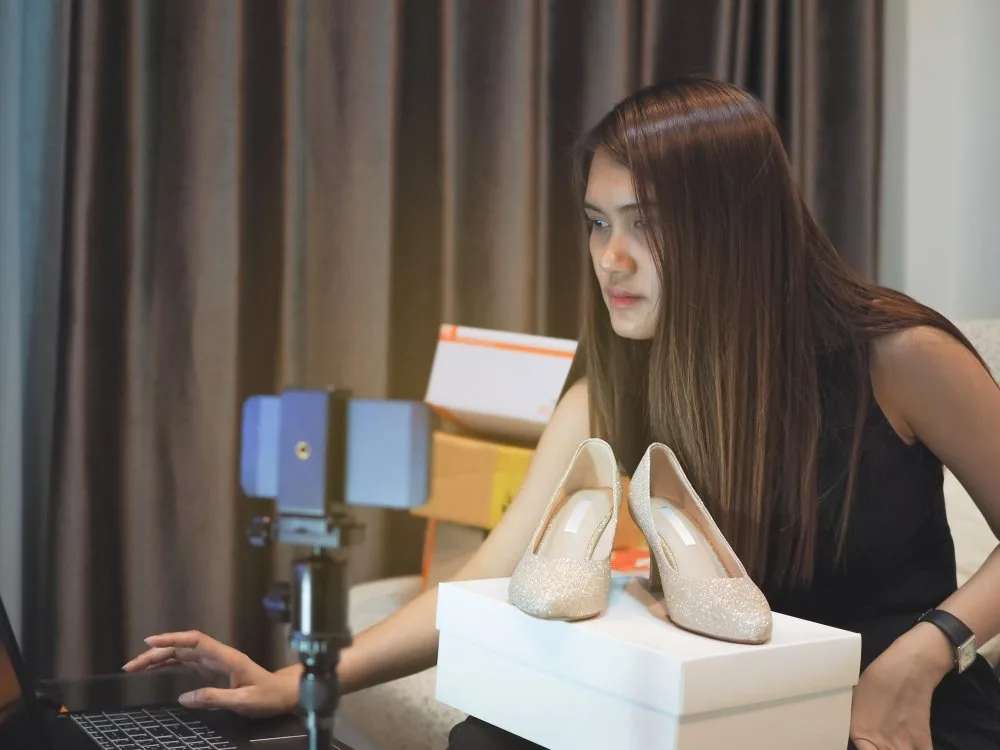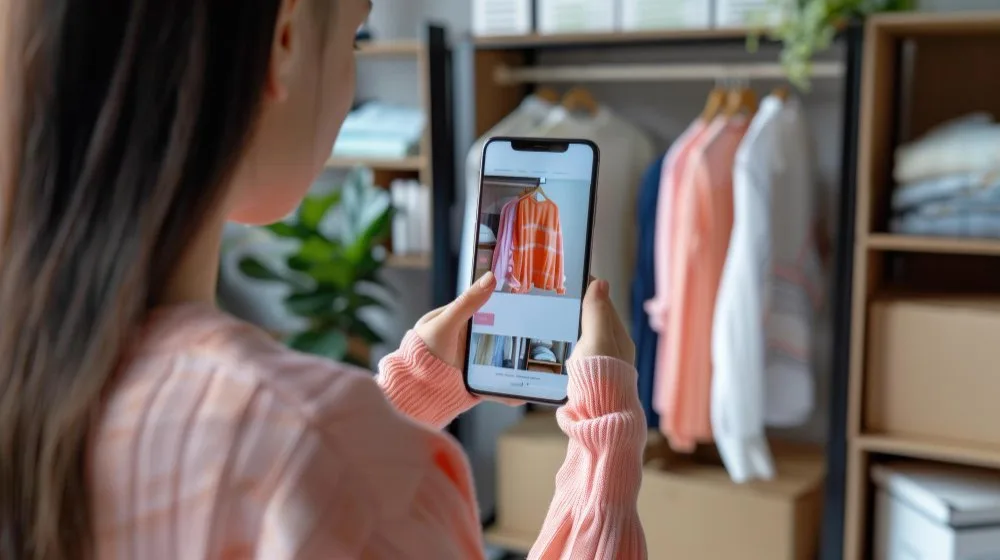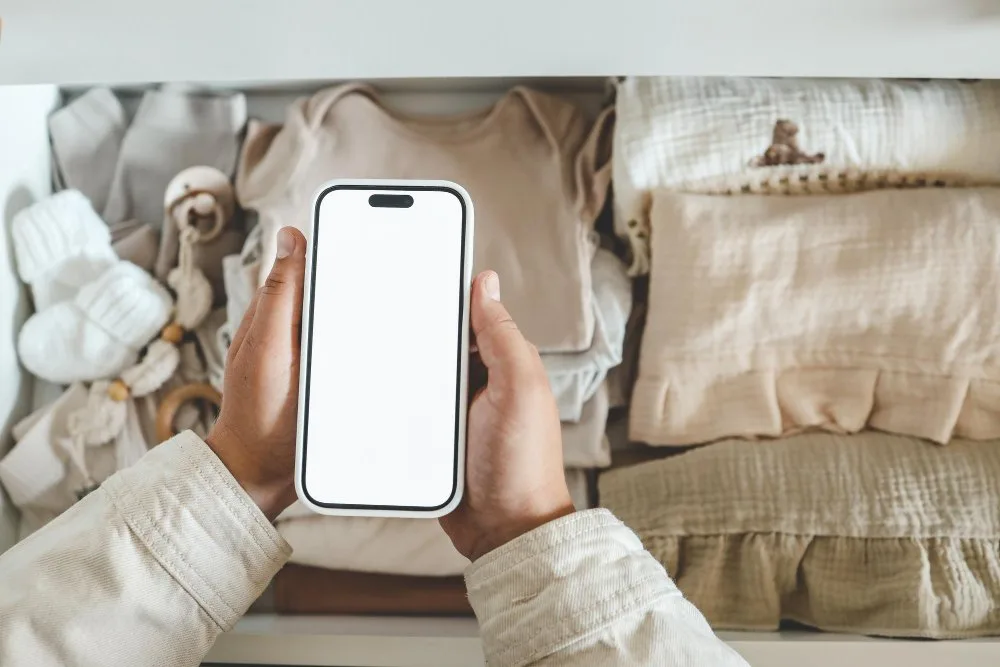Turn Outgrown Clothes into Cash: A Parent’s Guide to Poshmark Success
If you have kids’ clothes your children have outgrown, you may be wondering if you can sell them on Poshmark. Yes, Poshmark allows you to sell kids clothes, and it can be a simple way to make money from items your kids no longer need. Listing these clothes is allowed as long as the items are in good condition and fit within Poshmark’s rules.
I have found that kids’ clothing is a steady seller, especially if you offer popular brands and gently used pieces. With the right approach to pricing and presentation, many parents like me are able to move outgrown clothes quickly while earning some extra cash.
Table of Contents
Key Takeaways
- Poshmark lets me list and sell kids clothes.
- Good photos and fair prices help my sales.
- Choosing in-demand brands increases my chances of selling.
Can You Sell Kids Clothes on Poshmark?
I can list and sell kids clothes on Poshmark if I follow their rules and pick the right categories. Only specific types of children’s items are allowed, and items must meet certain size and age requirements for the marketplace.
Poshmark’s Categories and Policies
Poshmark does allow me to sell kids clothes, along with women’s and men’s clothing. Kids clothing has its own categories, such as “Girls,” “Boys,” and “Baby.” I need to make sure I select the right category when creating a listing.
If I want to list kids clothes, the items must be in good, clean condition. Clothing with excessive wear, stains, or damage is not accepted. Poshmark also has rules against selling non-clothing kids items, like car seats or toys, so I should only list allowed clothing and accessories.
Shipping is handled the same way as adult items. After an item sells, I print the prepaid shipping label Poshmark emails me. I need to package items securely and ship within a few days.
Allowed Kids Clothing Types
I can list almost any type of kids clothing, like shirts, pants, dresses, jackets, pajamas, and outerwear. Seasonal clothing, like swimsuits or holiday outfits, is also allowed. Accessories such as hats, mittens, belts, and shoes for children are permitted in the kids section.
I am not allowed to sell certain kids items, including car seats, cribs, strollers, sippy cups, or toys. Underwear, socks, bibs, and similar basics must be new with tags to be listed. Designer or unique kids clothes can bring higher prices, but common brands also sell well if they’re in good shape.
When I list, I always describe the condition clearly and take accurate photos, showing any tags, labels, or minor flaws to help buyers feel more confident.
Age Range and Size Guidelines
Poshmark’s kids section covers a wide age range. Sizes go from newborn and infant all the way up to teen sizes. The main sizing groups I see are:
| Category | Age/Size Range |
|---|---|
| Baby | Newborn to 24 months |
| Toddler | 12 months to 5T |
| Kids | 4 to 16 (girls & boys) |
| Juniors | Teen sizes, sometimes XS-XL or 0-13 |
I must select the correct size from the dropdown menu so buyers know exactly what they’ll receive. Accurate sizing and clear measurements in my listing minimize returns and improve buyer satisfaction.
If an item is in between sizes or fits unusually, I explain that in my description. This helps parents find the right items for their children and reduces confusion.
How to List Kids Clothes for Sale

When I list kids clothes on Poshmark, I focus on giving buyers clear information and making my listings easy to find. This means writing detailed descriptions, adding the right hashtags, and using clear photos.
Creating a Detailed Description
I always start with the brand name, size, and type of clothing. For example, I might write, “Carter’s boys’ T-shirt, size 6, short-sleeved.” Condition is important. I am honest about any signs of wear, stains, or fading, but I also mention when clothes feel like new.
Here’s what I include:
- Material: Cotton, polyester, denim, etc.
- Color: Mention all colors and patterns.
- Special Features: Snap buttons, adjustable straps, or sparkly details.
- Care Instructions: Machine washable or hand wash only.
I avoid long sentences and keep it simple. If the clothes have tags or come from a smoke-free home, I add that too. Short bullet points make information easier to read.
Using Effective Hashtags
Hashtags help buyers find my listings. I include specific and relevant hashtags, like #kidsclothes, #girlsfashion, or #boysoutfit. I don’t use random or unrelated hashtags because that can confuse buyers.
Some helpful hashtags for Poshmark kids clothes:
- #kidstyle
- #poshmarkkids
- #toddlers
- #babyclothes
I mix broad and specific tags. If it’s a dress, I add #dress or #partydress. For brands, I use #carters, #gapkids, or whatever fits. Placing the hashtags at the end of my description keeps things tidy.
Taking Quality Photos
I take clear photos in good lighting, using natural light when possible. I lay the clothes flat or use a hanger on a plain background, like a white sheet or a clean table. To show details, I include close-ups of patterns, logos, tags, or any flaws.
I try to snap photos from different angles:
- Front
- Back
- Close-up of any design or label
- Close-up of any stains or damage
I avoid using filters that might change the color. Before uploading, I check that every photo is focused and not blurry. Clean and well-folded clothes look more appealing in photos.
Setting Prices and Offering Discounts

Selling kids clothes on Poshmark means setting prices that attract buyers while making sure I earn a fair amount. I need to think about the value of my items, how used they are, and ways to give buyers extra reasons to purchase, like discounts or bundles.
Pricing Used Clothes
When I set the price for used kids clothes, I first check what similar items are selling for on Poshmark. I look at the brand, condition, and size. Higher-end brands or clothes in great shape can sell for more.
I usually start my listing price a bit higher than the lowest price I am willing to accept because buyers often make offers. Poshmark takes a 20% fee from the sale, so I keep this in mind so that I still make enough money after the fee is taken out.
Offering discounts, like lower prices or sending special offers to likers, can help move items faster, especially if I need space. I keep my descriptions clear and include details about any wear or flaws so buyers know what to expect.
Example Table: Price Strategy
| Brand | Condition | My Listing Price | Expected Sale Price |
|---|---|---|---|
| Gap Kids | Gently Used | $13 | $10 |
| Carter’s | Good | $8 | $6 |
| Mini Boden | Like New | $22 | $18 |
Creating Bundles
Grouping similar items together into bundles, or “lots,” can help sell more kids clothes at one time. For example, I can list a set of four shirts, or mix tops and bottoms by size. Bundles give buyers more value, and I reduce the number of packages I need to send.
I let shoppers know in my listing that I offer bundle discounts. On Poshmark, buyers can use the bundle feature to add items from my closet, and I can then send them a special offer, like 15% off or a shipping discount.
Bundling tips:
- Group by size, season, or style.
- Mention bundle deals in each listing.
- Watch the package weight. For kids clothes, I try to stay under five pounds to avoid higher shipping costs.
Offering bundle discounts encourages buyers to purchase more, which helps me clear out my inventory and make more sales in less time.
Shipping Kids Clothes on Poshmark

Shipping kids clothes on Poshmark is a simple process with clear steps. I focus on how much shipping costs, how labels work, and the best ways to package and send items to buyers.
Shipping Costs and Labels
Poshmark gives me a prepaid shipping label for every sale, so I don’t have to calculate postage myself. For most sales, shipping is a flat fee, usually paid by the buyer. As of 2025, this fee is about $7.97 for packages under five pounds.
If I want to offer free shipping as a seller, I can cover this fee instead. I need to make sure the package stays under the five-pound limit, or I’ll have to pay extra. Poshmark emails the label to me, and I just print it out and attach it to the package.
If I sell multiple kids’ clothing items in one order, I combine them in a single package to save on shipping costs and stay within the weight limit. The prepaid label works for any standard box or envelope—USPS Priority Mail supplies are free at the post office.
Tips for Packaging and Sending
I fold and pack kids clothes neatly to prevent wrinkles and fit more items in a small box. Using a plastic bag or tissue paper helps protect clothes from moisture. For delicate or expensive items, I wrap them in an extra layer before packing.
I always double-check the address on the shipping label. Then, I drop off the package at any USPS mailbox or post office. If I ship quickly—within one or two days—buyers usually leave good reviews.
If there’s a delay, I message the buyer with an update. Keeping packaging clean and secure helps make sure the items arrive in good shape and the buyer is happy with their purchase.
Choosing the Right Brands and Items to Sell
Picking the best brands and staying aware of current kids fashion trends can help your listings stand out and attract more buyers. Well-known labels and popular styles are more likely to sell quickly on Poshmark.
Popular Brands for Children’s Apparel
I look for trusted and familiar names because buyers usually search for brands they know. Nike, Old Navy, Carter’s, Hanna Andersson, Gap, and Adidas are top choices. These brands are popular for their quality and are often in demand.
Other brands, like Mini Boden or Tea Collection, can also sell well, especially for unique prints or comfortable fabrics. For shoes, Nike and Stride Rite are standouts. If I have dresses from brands like OshKosh B’gosh or Janie and Jack, those tend to attract parents looking for nicer outfits.
Here’s a quick reference:
| Brand | Type | Common Sells |
|---|---|---|
| Nike | Shoes, Clothes | Sneakers, Hoodies |
| Old Navy | Clothes | Dresses, Jeans |
| Carter’s | Clothes | Bodysuits, Pajamas |
Current Trends in Kids Fashion
I pay attention to what’s trending for kids, as this makes my items more appealing. Cute graphic tees, matching sets, and joggers are in style right now. Buyers also search for gender-neutral colors and minimalist designs.
Dresses with playful prints and activewear, like leggings or sporty shorts, are popular. Good condition is important—lightly used or new items get more attention. Shoes, especially sneakers in trendy colors, are favorites.
Seasonal items like winter coats or summer swimsuits also sell quickly when listed at the right time. Following these trends helps me make better choices when sorting through what to sell.
Tips for Standing Out in the Poshmark Kids Community

Making real connections and responding quickly can help my kids’ listings get noticed on Poshmark. Trust and fair offers are key for building a good reputation and selling more.
Engaging with Buyers and Sellers
I’ve found that talking with buyers and other sellers creates a friendly space where people feel comfortable shopping. I try to answer questions fast, even if someone just wants extra photos or needs more details about the clothes.
When I see someone “liking” my items, I use Poshmark’s features to send them a private offer or thank them. This shows I value their interest and can lead to a sale.
Simple engagement tips:
- Reply to comments within a few hours
- Follow other sellers, especially those in the kids category
- Return shares on listings to boost visibility
- Thank customers for purchases and share shipping updates
Getting involved in the community also means leaving reviews for other sellers and joining virtual Poshmark parties made for kids’ items.
Building Trust and Handling Offers
Trust matters a lot in buying and selling kids’ clothes. I write honest descriptions and upload clear, undistorted photos that show the real quality of each item. If an item has a stain or flaw, I point it out and show it in a photo.
When I get offers, I respond politely—even if I plan to counter with a different price. I use the “make offer” feature to encourage buyers, but never accept deals that seem too low for the item’s value.
Best ways to build trust:
- Always ship orders quickly (within Poshmark’s shipping window)
- Keep my communication positive and clear
- Package items neatly so they arrive in good shape
- Leave feedback for buyers and ask them to do the same
Being consistent with these steps helps me stand out as a reliable seller in the kids’ section of Poshmark.
Comparing Poshmark to Other Platforms
I find there are several online and in-person choices for selling kids’ clothes. Each one works a bit differently, has its own audience, and comes with unique benefits or drawbacks.
Selling on eBay vs. Poshmark
When I list kids’ clothes on eBay, I notice there are more options for setting prices and selling in auction or “Buy It Now” formats. eBay’s audience is larger and covers a wide range of categories, including baby gear and toys.
Shipping can be more complex on eBay, since each listing usually requires me to weigh packages and select pricing. However, eBay lets me reach buyers internationally, which expands my market.
Poshmark, by comparison, is easier to use for shipping. The app provides prepaid labels and buyers pay for shipping themselves. Pricing is simple and there are fewer listing options, making it more beginner-friendly. Poshmark focuses more on clothing and accessories, so buyers are already looking for apparel.
Kids Clothing on Mercari and Kidizen
Mercari offers a middle ground. I get more freedom with listing terms than on Poshmark, but it isn’t as complex as eBay. Mercari has its own shipping options and prepaid label system. The platform allows a wide range of items, making it flexible for mixed lots, toys, or even baby gear.
Kidizen is specifically made for kids’ fashion and items. When I sell on Kidizen, I am targeting parents shopping for children’s clothing. The user base is smaller than eBay, but more focused. Kidizen’s app is designed with families in mind, so I find it easy to list, sell, and bundle kids’ clothes. Many sellers and buyers value quality brands and gently used or boutique items here.
Consignment and Consignment Shops
Consignment shops offer a different way to sell. When I choose consignment, I drop off my gently used kids’ clothes at a local store or ship my items to an online seller, like ThredUP.
The store sells them for me, and I get a percentage of the sale after the item sells. This is less work for me, but I usually make less money—sometimes as little as 30–50% of the selling price.
Consignment is best if I want to save time and avoid managing listings, questions, and shipping myself. Local shops are another option if I prefer an in-person experience or want to avoid shipping costs. Some shops are picky about the brands and condition of items they accept.
Legal and Financial Considerations for Selling Kids Clothes

When I sell kids clothes on Poshmark, I need to be aware of specific rules about refunds, returns, and selling internationally. Understanding these details helps me avoid surprises with payments and keep buyers happy.
Return and Refund Policies
Poshmark’s policy is that all sales are final unless the item is not as described. This means buyers cannot return items just because they changed their mind or the clothes did not fit. If there is a problem, such as the wrong item sent or significant damage not mentioned, the buyer can open a case with Poshmark.
If a return is approved, Poshmark steps in and handles the process. The buyer sends the item back, and my balance will be adjusted once the return is complete. I keep my descriptions clear and upload real photos to prevent refund disputes.
Payments for my sales are held until the buyer marks the item as received or three days have passed. After the funds are released, I get paid through direct deposit or a check. Posh Credits cannot be converted to cash, as noted in Poshmark’s Terms of Service.
International Sales and Poshmark Canada
Currently, Poshmark only supports sales within the same country’s platform. This means I can sell to buyers in the United States from Poshmark US, and to buyers in Canada if I use Poshmark Canada. Cross-border sales between the U.S. and Canada aren’t allowed.
If I live in Canada and want to sell kids clothes, I need to register on Poshmark Canada. All transactions—including shipping, taxes, and customer support—are managed through the local site. I need to check the latest seller requirements and fees, as they can differ between the US and Canadian platforms.
When selling to buyers in my own country, the shipping label provided is valid for domestic addresses only. International shipping is not available, so I cannot ship to buyers outside my registered region. This keeps things simple but limits my potential reach.
Expanding Your Kids Clothing Shop

I can grow my kids clothing shop on Poshmark by using social media, adding accessory sales, and exploring secondhand markets. These strategies help me reach more buyers and build a stronger, more trusted shop.
Using Instagram and Blog Promotion
I use Instagram to post clear photos of my kids’ clothes and accessories. I tag my posts so parents looking for specific brands or sizes can find my items. Quick videos showing how I package or style outfits let buyers see that I take care of each order.
Running a blog adds another way for people to find my listings. I write simple posts on topics like finding the right size or how to buy sets for less. By adding links to my Poshmark shop, I make it easy for readers to shop my closet.
I can also team up with other parents or sellers. We run small giveaways or share each other’s posts, which brings in new followers. Staying active on both Instagram and my blog keeps buyers interested.
Growing Your Brand with Accessory Sales
Adding accessories to my kids clothing shop lets me offer complete outfits. I include items like hats, socks, bows, and shoes. Grouping a shirt with a matching headband, for example, gives buyers more value in one simple purchase.
Accessories are often low-cost but help make each listing stand out. I use bundles to suggest outfit ideas or mix hand-me-downs with new accessories. This helps attract buyers who want unique sets.
Here’s a quick bundle example:
| Main Item | Accessory 1 | Accessory 2 |
|---|---|---|
| Dress | Headband | Socks |
| Hoodie | Beanie | Mittens |
Selling accessories boosts my shop’s brand because buyers recognize my style and trust that I put together quality items.
Transitioning into Secondhand Clothing Markets
After getting comfortable selling kids clothes, I start looking at secondhand markets beyond Poshmark. Many parents search for gently used outfits, especially as children grow fast. This makes hand-me-downs and used items very popular.
I visit local thrift stores and online marketplaces like Facebook groups to source more inventory. Listing these finds in my shop, I always describe the condition honestly and show any signs of wear. This helps buyers know exactly what they are getting.
By offering quality secondhand clothes, I attract people who want to save money and reduce waste. I stay organized by tracking my inventory and rotating stock often, so my shop keeps fresh options for new and returning buyers.
Opportunities Beyond Kids Clothes

Selling on Poshmark opens the door to much more than just kids’ clothing. I can list a range of other items to expand my store and reach more buyers.
Selling Shoes, Handbags, and Jewelry
On Poshmark, I’m allowed to sell shoes, handbags, and jewelry for all ages. Popular brands like Chanel and Louis Vuitton attract buyers looking for designer fashion, but I can also find buyers for more affordable brands.
Clean, well-photographed shoes sell well, especially if they are in good condition. Handbags, including designer purses and everyday totes, also catch the attention of Poshmark users. Jewelry is accepted as long as it’s authentic and in good shape. I always describe the item’s condition accurately and include clear photos.
Here’s a simple list of items I can sell in this category on Poshmark:
- Sneakers, boots, sandals
- Handbags, backpacks, wallets
- Necklaces, bracelets, earrings
Extending Your Store to Include Men’s and Women’s Fashion
I don’t have to limit my Poshmark store to kids’ items. I can sell both men’s and women’s clothing, which increases my pool of potential buyers. This includes everything from shirts, jeans, and jackets to activewear and outerwear.
Many users shop for trendy brands and classic designers. Items from brands like Louis Vuitton and Chanel often sell for higher prices. However, basics and budget-friendly labels are also in demand. I make sure my listings have good lighting, measurements, and honest descriptions.
Selling adult clothing helps me turn unused items into cash and reach more shoppers who look for variety in one closet.
Other Items: Electronics and Home Goods
It’s possible to sell more than just clothes and accessories on Poshmark. I can list certain electronics and home goods, such as headphones, tablets, small kitchen appliances, bedding, and decorative items.
There are rules on what types of electronics are allowed, so I check Poshmark’s guidelines before creating a listing. Pre-owned home items must be clean and in good working condition. Photos should show the item clearly and highlight all details.
Examples of home and electronics I can sell:
| Category | Example Items |
|---|---|
| Electronics | Headphones, smartwatches |
| Home Goods | Blankets, decorative pillows |
| Kitchen | Coffee makers, toasters |
Listing these options allows me to create a more complete store that meets different needs.
Conclusion
Selling children’s clothing on Poshmark offers parents a practical solution to the constant challenge of outgrown clothes while providing an opportunity to recoup some of your investment in these quickly outgrown items. The platform makes it straightforward to list, price, and ship kids’ clothing to interested buyers who are specifically looking for these items.
Success on Poshmark comes from attention to detail and understanding what makes the platform unique. By creating detailed listings with accurate descriptions, taking clear photos that showcase the condition of items, and pricing competitively while leaving room for offers, you can establish yourself as a trusted seller in the kids’ section. The platform’s social features, such as following other sellers and sharing listings, further enhance visibility and build community connections that lead to more sales.
Shipping is simplified with Poshmark’s prepaid labels, removing the guesswork from postage calculations. Creating bundles of similar items not only helps you clear out more inventory at once but also provides better value for buyers who can save on shipping costs. This approach is particularly effective for kids’ clothes, where parents often need multiple items in the same size.
Beyond just listing clothes, expanding into accessories, shoes, and even adult clothing can transform your Poshmark shop from a simple decluttering effort into a more substantial side business. The platform’s reach allows you to connect with buyers across your country who are specifically looking for the brands and styles you’re offering.
Key Recommendations:
- Focus on quality presentation – Clear, well-lit photos and honest, detailed descriptions build buyer trust and reduce returns.
- Price strategically – Research similar items, price slightly higher than your minimum acceptable price, and be open to reasonable offers.
- Bundle similar items – Group clothes by size or theme to provide value and move more inventory at once.
- Ship promptly – Quick shipping and secure packaging lead to positive reviews and repeat customers.
- Leverage popular brands – Items from recognized brands like Carter’s, Gap Kids, and Nike tend to sell more quickly.
- Engage with the community – Respond quickly to questions, follow other sellers, and participate in Poshmark’s social features.
- Consider cross-promoting – Use social media platforms like Instagram to showcase your listings and attract more potential buyers.
- Expand beyond kids’ clothes – Consider adding accessories, shoes, and even adult clothing to increase your potential market.
- Maintain accurate inventory – Keep track of what you’ve listed and sold to prevent errors and negative reviews.
- Be honest about condition – Always disclose any flaws or wear, as transparency builds a positive reputation.
Whether you’re simply looking to clear out your child’s closet or hoping to build a more substantial reselling business, Poshmark provides a user-friendly platform that connects you with buyers specifically looking for children’s clothing. With some attention to detail and consistent effort, you can turn those outgrown clothes into cash while providing other families with affordable, quality options for their growing children. The platform’s combination of social features, straightforward shipping, and targeted audience makes it an excellent choice for parents looking to give new life to gently used kids’ clothes.



